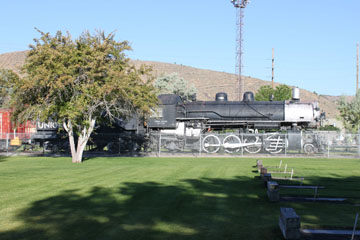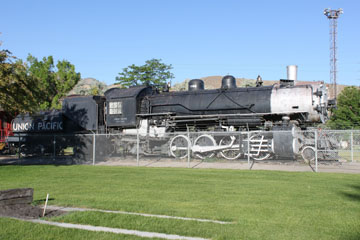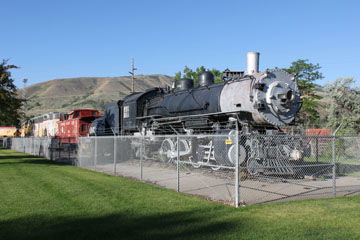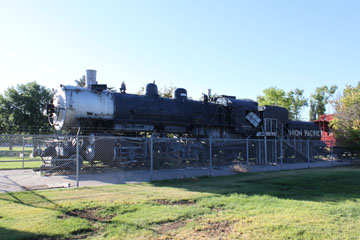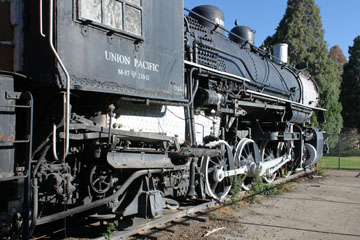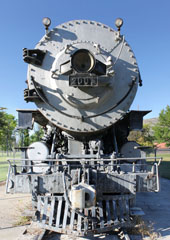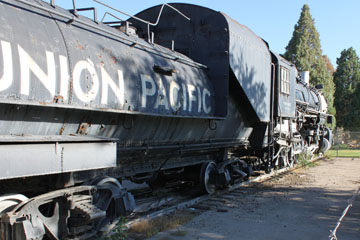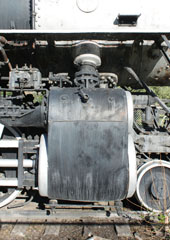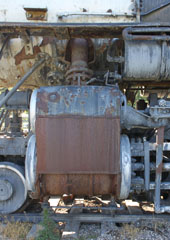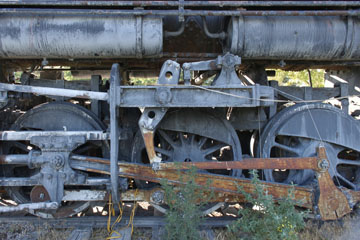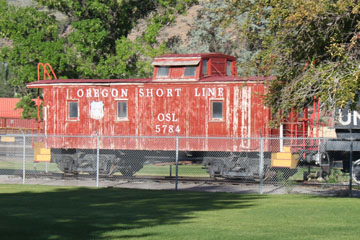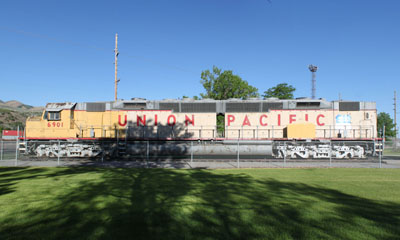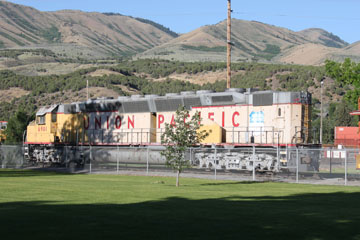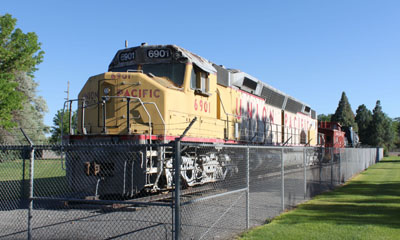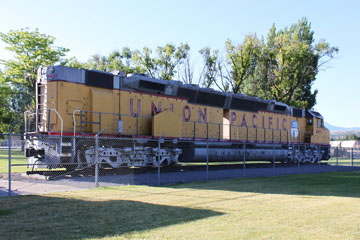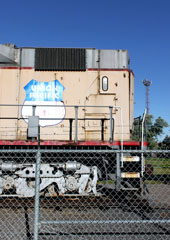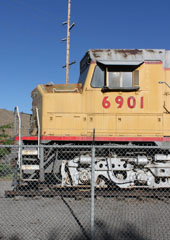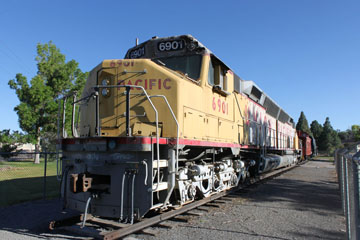

Union Pacific #2005 was one of the second batch of fifteen Class MK-1 Mikado type (2-8-2) locomotives delivered to the railroad in 1911 (thirty had already been delivered earlier that year). Built by Baldwin as #1100-#1114, they were renumbered #2000-#2014 in 1915.
A coal burner, #2005 was one of five of this class equipped with a duplex stocker, increasing the engine weight by 1,550 pounds. Designed to burn low-calorie lignite coal, a radial-stay boiler was substituted for the usual crown-bar boiler. Drawing on experience of burning lignite in Chicago, Burlington & Quincy locomotives, the 70.4 sq ft grate had many narrow openings and a high mounted firebrick arch to soften the pull of the draft on the coal bed. The smokebox was also larger and had fine netting to catch sparks, and a low-mounted nozzle and bell-mouthed extension were fitted to the stack.
In 1912, the UP superheated the MK-1s, trading two hundred and twenty of four hundred and ninety-five 2” tubes for thirty-six flues providing 865 sq ft of superheating. The firebox heating surface included 32.2 sq ft of fire brick arch tubes, although some had their arch tubes removed when later converted to oil-burners.
Superheating
increased the engine weight by 2,600 lbs to 265,600 lbs, and weight on the 57” drivers from 205,425 lbs to 206,200 lbs.
With a 70.4 sq ft grate and 267 sq ft firebox, the total heating surface dropped 441 sq ft to 5,118 sq ft.
The MK-1s followed Harriman Standard designs, including 25" pistons bushed to
23¾" x 30", and12" piston valves with ¼" lead.
Operating at a boiler pressure of 190 psi, the locomotive delivered 47,945 lbs tractive effort.

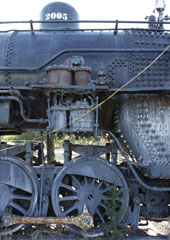
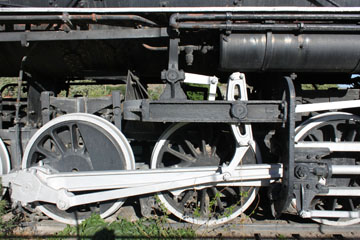
Retirements of MK-1s started in 1947, although #2005 served on the Oregon Short Line until the early 1950s. It was donated to the City of Pocatello, ID, in 1958 and is on display in Ross Park along with a wooden Class CA-1 Caboose liveried as OSL #5784 (right) and Union Pacific DDA-40X Centennial #6901 (far right).
In fact, this caboose never ran on the OSL. It was built in 1923 for the UP as #2662 by the Mount Vernon Car Manufacturing Co., in Mount Vernon, IL. It was renumbered #25784 in 1962 and was subsequently repainted as OSL #5784.
With two engines mounted on a single 98’ 5” frame producing 6600 hp, these were the longest and most powerful diesel locomotives ever built.
Designed for high-speed freight, by 1980 the Centennials had accumulated an average of
2 million miles each. With the decline of freight movement in 1980, however, the fleet was taken out of service and put in storage at Yermo, CA. A March 1984 economic upturn recovery brought twenty-five back into service, but high maintenance costs had led to the retirement of most of them by the close of 1986.
#6901 was outshopped in August 1969.
Between 1969 and 1971, forty-seven of these units were built (#6900-#6946) by EMD. They were named "Centennial" in honour of the 100th anniversary of the Driving of the Golden Spike on 10th May 1869 (there is a page on the Golden Spike NHS on this website).
Fifteen of the Union Pacific Centennials have survived.
You can see the first outshopped, #6900, on the Kenefick Park page of this website.
#6913 is on the Museum of the American Railroad page, #6915 on the Southern California RLHS page, #6916 on the Ogden Union Station, #6922 on the UP Challenger, #6930 on the Illinois Railroad Museum Yard, #6936 on the UP Cheyenne Roundhouse and #6944 on the National Museum of Transportation, St. Louis Yard page.


